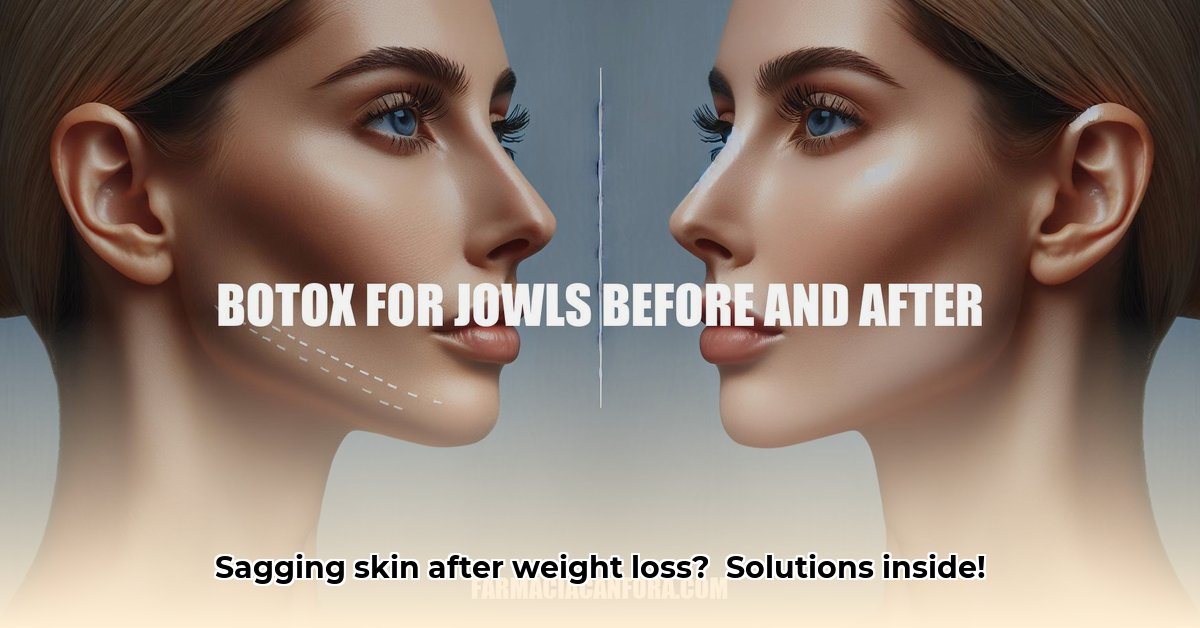
Understanding Jowls and Weight Loss
Losing weight is a significant achievement, but sometimes it reveals unexpected consequences: sagging skin, particularly noticeable as jowls—that loose, hanging skin under the chin. While weight loss contributes, it's not the sole culprit. Aging, sun damage, and genetics all play a role. As we age, our skin loses collagen and elastin, the proteins responsible for its firmness and elasticity. Weight loss exacerbates this by reducing the underlying fat that supports the skin, leading to a more pronounced sagging effect. This article reviews at-home treatments and provides a practical guide to help you regain a more defined jawline.
At-Home Treatments for Jowls: A Realistic Review
Let's be clear: at-home treatments can improve the appearance of jowls, but they are not a complete solution. For dramatic improvements, professional treatments (discussed later) may be necessary. This review focuses on realistic expectations and evidence-based approaches.
Topical Treatments: Retinol and Vitamin C
Retinol (a vitamin A derivative) stimulates collagen production, improving skin firmness over time. Vitamin C, a powerful antioxidant, protects against further damage and supports collagen synthesis. Both are readily available in creams and serums.
Pros: Relatively inexpensive and widely accessible.
Cons: Results are gradual, often requiring several months of consistent use. Some individuals experience mild skin irritation, especially when starting retinol.
"Retinol is a proven collagen booster, but results take time," states Dr. Anya Sharma, Dermatologist at the University of California, San Francisco. "Consistency is key. Don't expect overnight miracles."
Facial Exercises: A Promising but Unproven Method
Facial exercises aim to strengthen underlying facial muscles, potentially reducing jowl appearance. However, scientific evidence supporting their efficacy is limited. While some users report positive results, more research is needed.
Pros: Free and convenient; can be incorporated into daily routines.
Cons: Requires consistent effort with uncertain results. Might improve overall facial muscle tone, but jowl reduction may be minimal. Some exercises may even be damaging if done incorrectly. It's important to consult a physical therapist or other professional to identify appropriate and safe techniques.
Supplements: Collagen and Silica
Collagen supplements aim to boost collagen production from within. Silica, another supplement, plays a role in collagen formation. However, the effectiveness of these supplements varies significantly, and more research is needed.
Pros: Easy to incorporate into a daily routine. May support collagen production, though evidence is not conclusive.
Cons: Results are unpredictable and not guaranteed. They are unlikely to provide significant jowl reduction.
Hydration and Sun Protection: Essential for Skin Health
Adequate hydration is crucial for maintaining skin plumpness and elasticity. Dehydration can worsen the appearance of jowls. Sun protection is equally important, as UV radiation accelerates skin aging and collagen breakdown.
Pros: Essential for overall skin health and well-being.
Cons: While beneficial to skin health, they alone won't dramatically reduce jowls. They're preventative measures rather than curative ones. Don't neglect these crucial elements of skincare, though.
Creating Your At-Home Jowl-Reduction Plan: A Step-by-Step Guide
Combine several methods for optimal results. Remember, consistency and realistic expectations are key.
Step 1: Consult a dermatologist. They can evaluate your skin and advise on appropriate treatments.
Step 2: Incorporate a daily skincare routine featuring retinol and vitamin C serum, applied consistently in the evenings.
Step 3: Stay well-hydrated by drinking ample water throughout the day.
Step 4: Consider gentle facial exercises, focusing on correct technique to avoid injury.
Step 5: Maintain a balanced diet rich in antioxidants and collagen-boosting nutrients.
Step 6: Protect your skin from the sun using a broad-spectrum sunscreen with an SPF of 30 or higher daily.
Step 7: Be patient. Significant improvements usually take several months of consistent effort.
When to Seek Professional Help
If at-home treatments yield unsatisfactory results, consult a dermatologist. They can offer advanced treatments like laser therapy, fillers, or surgical options for more significant and rapid improvement.
Conclusion: Realistic Goals and a Healthy Approach
While at-home treatments can modestly improve jowl appearance, they are not a miracle cure. A comprehensive approach combining skincare, lifestyle choices, and potentially professional treatments offers the best chance of achieving your desired results. Prioritize realistic expectations and celebrate your progress along the way, focusing on overall skin health and well-being.